![Types of Videos B2B Buyers Prefer [Study]](https://bersondeanstevens.com/wp-content/uploads/2022/05/VideoShoot-1080x675.jpg)
by Lori Berson | May 16, 2022 | Content Marketing, Marketing Strategy, Video, Video Marketing
According to the results of a Brightcove study conducted by Ascend2, video has a strong influence on the B2B buyer’s purchase journey. Virtually all (95%) of the buyers surveyed for the report said that video has an important role in deciding to move forward with a purchase.
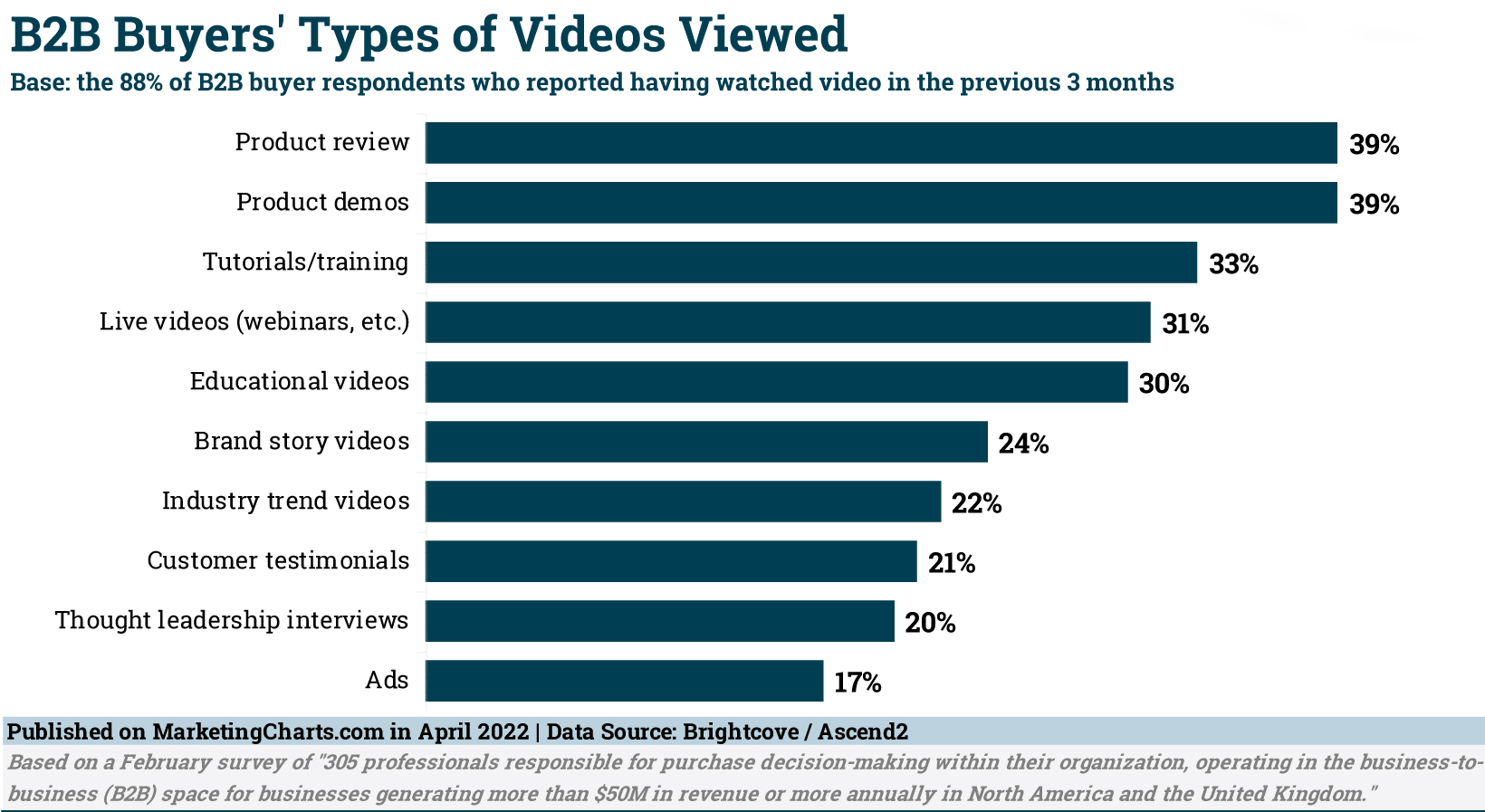
Video’s use in making purchase decisions manifests in various ways, according to the study, though buyers are most likely to find it helpful when learning about a product/service (58%).
Beyond learning about products and services, video also proves helpful to buyers in understanding a problem they have (36%) and learning how to solve a problem they have (40%). Buyers separately said that videos were more helpful than any other content type for creating awareness of business-related problems. Moreover, when comparing solutions to such problems, about 6 in 10 respondents said that video is the most impactful content type.
Video Types Preferred
Almost 9 in 10 B2B buyers have watched a video in the last 3 months for the purpose of learning about a product or service, and almost half (46%) have watched a video at least 5 times in pursuit of product and service research.
Two types stand out as the most widely watched: product reviews and product demos, each by 39% of this group of respondents.
Other popular types of videos watched include tutorials/training (33%), live videos such as webinars (31%), educational videos (30%), and brand story videos (24%).
Almost 3 in 4 (73%) report a preference for video over written communication when being introduced to a sales/customer service representative. And watching a video certainly seems to open buyers up to such communication: virtually all of the buyers surveyed said they were extremely or somewhat likely to be more receptive to sales communication from a specific organization after consuming its video content.
Additional Insights:
- 93% of buyers report that video is important in building trust in a brand.
- Almost all (97%) buyers find video content and communication to be useful post-purchase.
- Video is most helpful in the post-purchase stage for learning about other products/services offered and for training/onboarding.
- About 8 in 10 (81%) prefer video over written content when learning how to use a product or service.
About the Data: The results are based on a February survey of 305 professionals responsible for purchase decision-making within their organization, operating in the business-to-business (B2B) space for businesses generating more than $50M in revenue or more annually in North America and the United Kingdom.
Need assistance with your video marketing? Schedule a call or email Lori Berson at lberson@BersonDeanStevens.com.
BersonDeanStevens has been a recognized brand strategy and marketing leader for over 25 years, including over a decade in marketing and sales automation. We work in partnership with you to differentiate your brand and achieve your business goals. Client list.
![Most Important Marketing Tactics Contributing to Campaign Performance [Report]](https://bersondeanstevens.com/wp-content/uploads/2022/05/Marketing-Tactics.webp)
by Lori Berson | May 14, 2022 | Marketing
Almost 2,000 marketers around the world were asked by Nielsen to rank the order of importance of a variety of marketing tactics from most important (1) to least important (9) when considering the contribution to campaign performance.
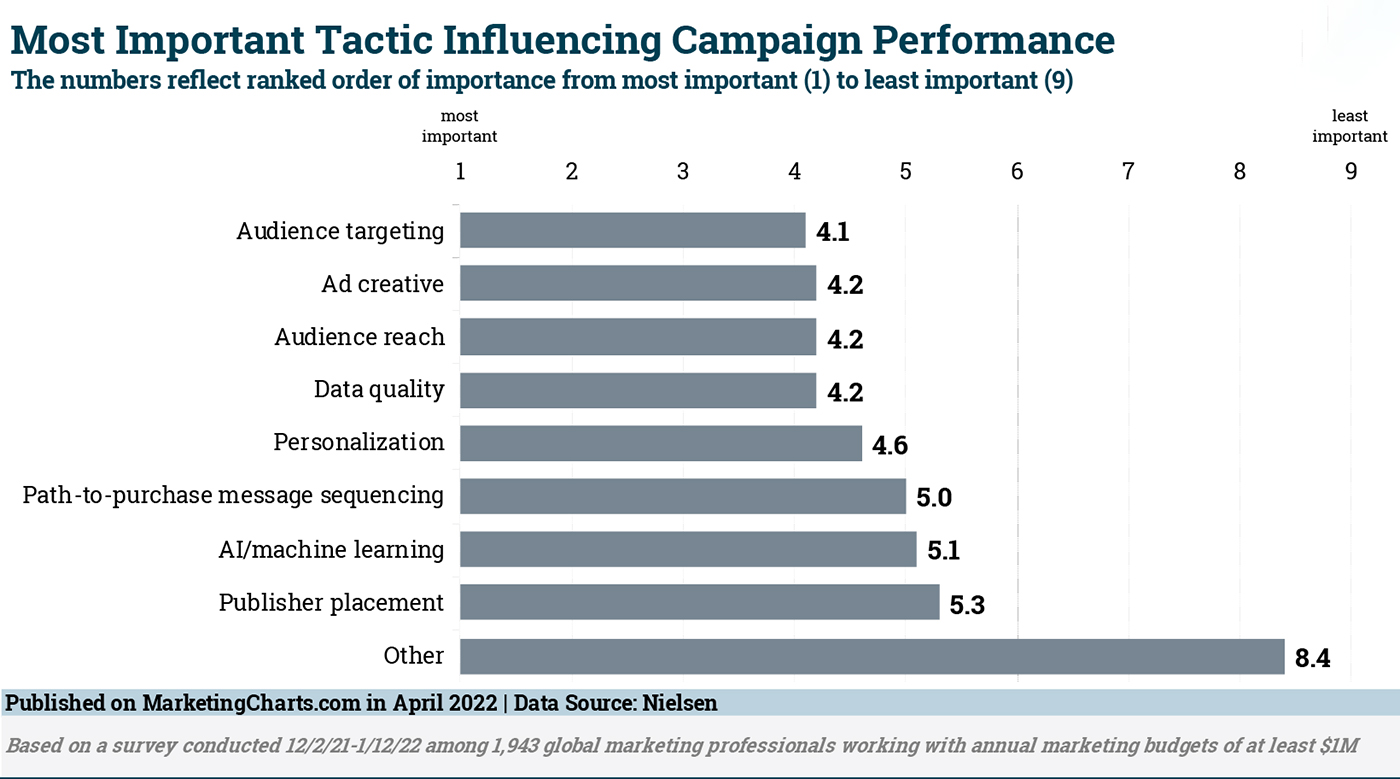
The results of Nielsen’s 5th Global Annual Marketing Report indicate that audience targeting came out on top, with an average rank of 4.1. Following closely was a grouping of ad creative, audience reach, and data quality, each with an average rank of 4.2.
Rounding out the top 5 was personalization (average rank of 4.6), ahead of path-to-purchase message sequencing (5), AI/machine learning (5.1), and publisher placement (5.3).
Almost 5 years ago Nielsen released a report which found that at least for CPG campaigns, creative (quality/messaging) had a far greater contribution to sales lift from advertising than did reach or targeting. A more recent survey from Westwood One and Advertiser Perceptions, however, revealed that marketers and agencies believed that targeting was a bigger driver of sales than creative or reach.
One factor unique to this latest survey is data quality. Only about 1 in 4 (26% of) survey respondents strongly agree that they have access to the quality audience data they need to get the most out of their media budget, though it’s true that an additional 45% somewhat agree that they do. This is supported by recent research from Ascend2, in which only 1 in 3 respondents said that the quality of their data allowed them to make effective decisions on where to spend marketing and/or sales resources, though another 55% somewhat agreed.
More than 1 in 3 of the Nielsen survey respondents report the following to be extremely or very difficult: data access (36%); identity resolution (36%); actionable data insights (36%); data accuracy/quality (35%); and data scale (34%). An additional third or so find these topics to be moderately difficult.
About the Data: The results are based on an online survey conducted December 2, 2021-January 1, 2022 among 1,943 global marketing professionals at or above the manager level, working with annual marketing budgets of at least $1 million. Respondents were from the auto, financial services, FMCG, technology, health care, pharmaceuticals, travel, tourism, and retail industries.
Need assistance with your marketing strategies? Schedule a call or email Lori Berson at lberson@BersonDeanStevens.com.
BersonDeanStevens has been a recognized brand strategy and marketing leader for over 25 years, including over a decade in marketing and sales automation. We work in partnership with you to differentiate your brand and achieve your business goals. Client list.

by Lori Berson | May 10, 2022 | Digital marketing, Marketing, marketing technology
Overview
With pandemic shutdowns, the ‘great resignation’ (leading to millions of start-ups*), supply chain disruptions, and increasing inflation, it’s been tough to bring in new business.
We’ve seen many small businesses, professionals, and independent contractors struggling to either jumpstart sagging sales or get a new business off the ground. Many have considered hiring a marketing agency, a marketing consultant, or adding to staff but that can be expensive when budgets are tight and talent is limited. In looking for a way to help the business community that has been so good to us over the years, we came up with the idea to write ‘Ready-Made Marketing.’
Take the guesswork out of marketing.
Designed to help people succeed, the book is a quick and easy DIY marketing resource that enables those who don’t have marketing expertise (or the money to hire it) to market themselves, their services or their businesses and start seeing immediate results. Ready-Made Marketing is not about writing marketing plans or strategies; it provides practical, customizable templates for a variety of business-building situations, step-by-step instructions for using proven and effective marketing tactics, and over 400 technology resources that are affordably priced or free.
Abbreviate what you have to do to lighten your workload.
The book is action-oriented; it’s not a novel to read through nor does it require a major time commitment. For example, if you need to write a cold email, you can choose from a variety of templates or if you need a video script, you just go in and pick one. Or if you need a technology resource (e.g. video recording software, content creation tools, podcast hosting, among others) you can select from 21 categories or use the authors’ choices.
Whether you’re starting a new business, want to increase revenue for your current business, or know of someone who needs to jumpstart sales, this book is a game-changer.
To make 2022 a better year, check out Ready-Made Marketing.
*According to the U.S. Census Bureau:
- In 2020, there were more than 4.4 million new businesses; the highest total on record.
- This is a 24.3% increase from 2019; 51.0% higher than the 2010-2019 average.
- ½ million new businesses were started in January 2021 alone.
BersonDeanStevens has been a recognized brand strategy and marketing leader for over 25 years, including over a decade in marketing and sales automation. We work in partnership with you to differentiate your brand and achieve your business goals. Client list.
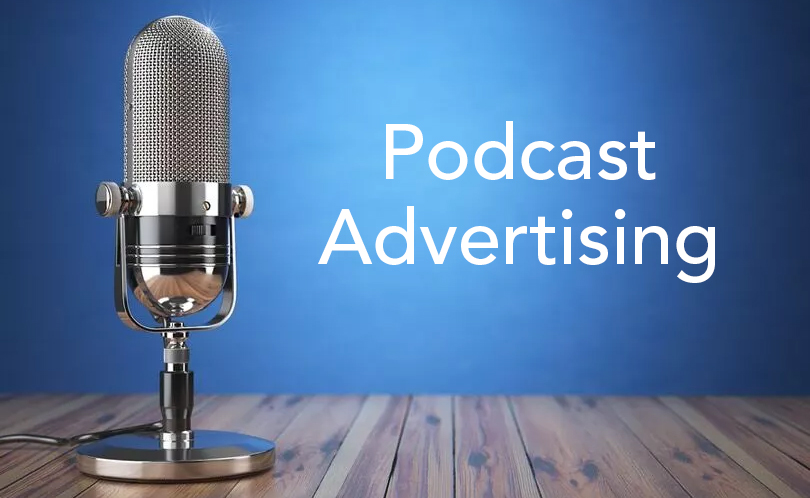
by Lori Berson | Apr 26, 2022 | Digital marketing, Marketing, Podcasts
EMarketer forecasts that US podcast ad spending will surpass $2 billion next year and $3 billion by 2026. Podcasts will account for over a quarter of digital audio services ad spending in 2022 and will be more than a third of spending by the end of 2026.
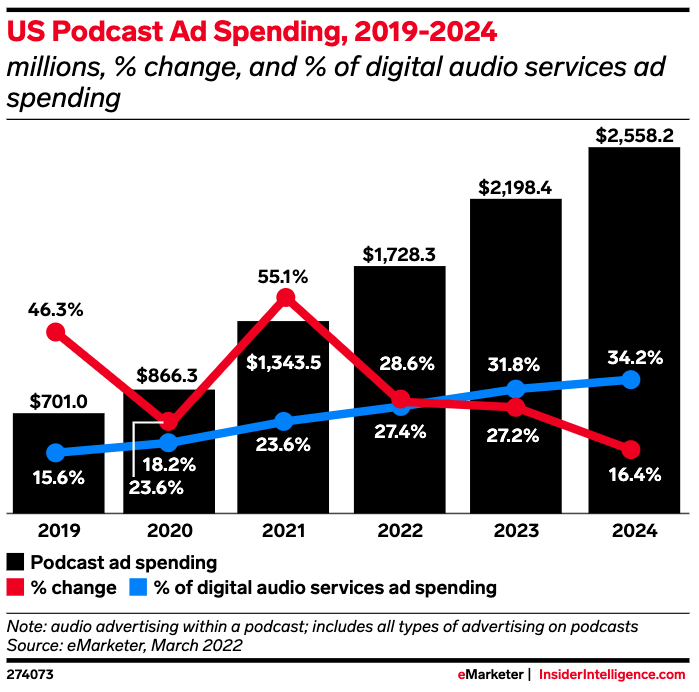
Most digital audio monetization will come from recorded music for the foreseeable future, but podcasts’ share of the market has grown—and will continue to do so. Previously only employed with experimental budgets, podcasts are becoming a crucial component of multimedia ad campaigns.
More than half of advertisers said they planned to increase their podcast ad budgets in 2022, according to a poll of 255 US advertisers conducted by Advertiser Perceptions in August 2021. Nearly half (46%) planned to keep their budgets the same, and just 1% planned to reduce podcast ad spending.
The survey also showed overall digital budgets were the most commonplace that advertisers pulled their podcast ad budgets from.
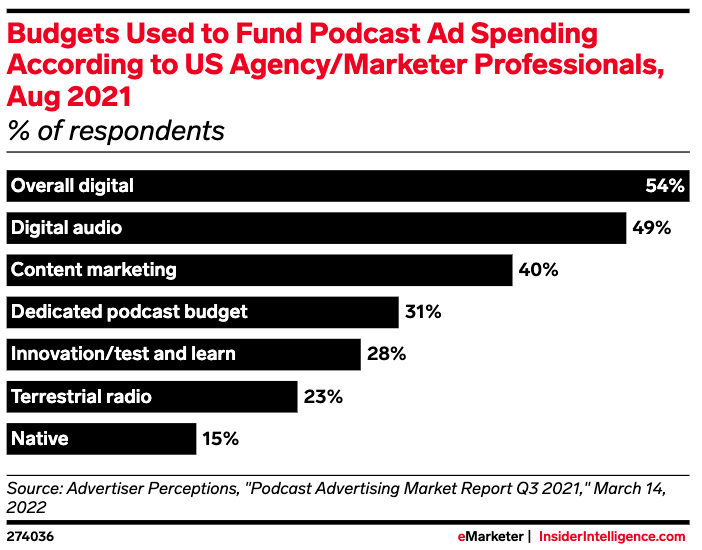
Most advertisers did not have dedicated podcast budgets. About half used their digital audio budgets to fund podcast campaigns. As podcast ad spending increases and accounts for a greater share of total audio ad dollars, more advertisers are expected to break out podcast-specific budgets. Having dedicated budgets could help centralize campaign planning and measurement for advertisers committed to podcasts over the long run.
Need assistance with your podcast marketing strategy and production? Schedule a call or email Lori Berson at lberson@BersonDeanStevens.com.
BersonDeanStevens has been a recognized brand strategy and marketing leader for over 25 years, including over a decade in Marketing Automation. We work in partnership with you to differentiate your brand and achieve your business goals. Client list.
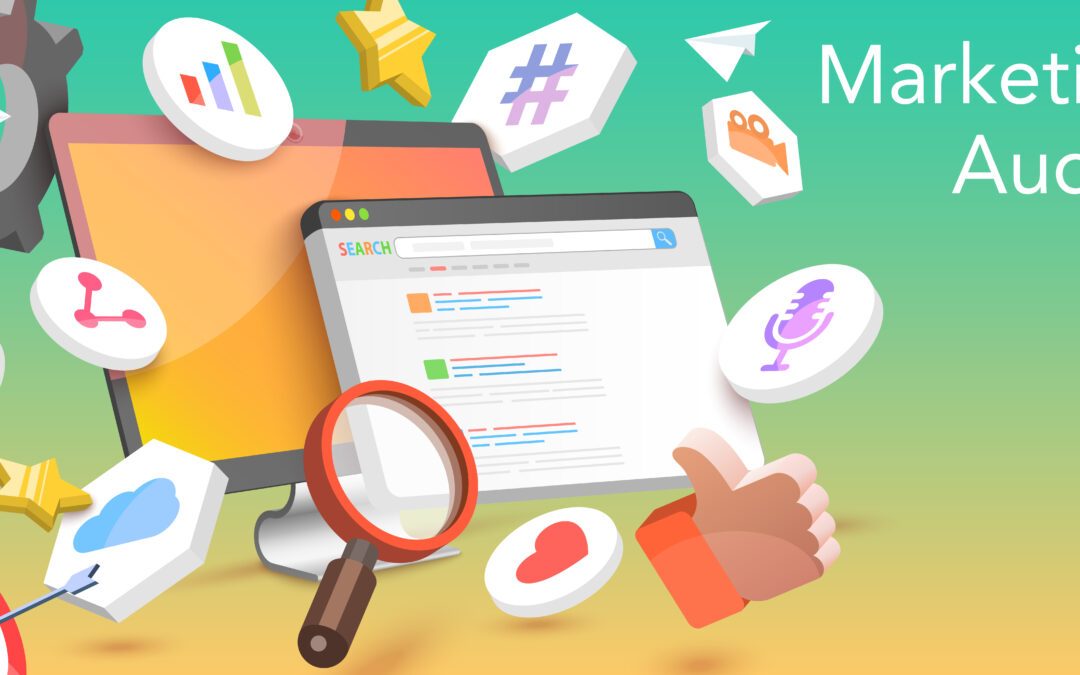
by bersondev | Apr 8, 2022 | Marketing, marketing technology
We typically associate the term “audit” with finance and taxes. Whether for taxes or marketing, the purpose of an audit is to uncover what you did and why, what’s working, and what should be changed.
A marketing audit should examine all of your work, your calendar, and the results to determine successful efforts, evaluate where you’re over- or under spending, check your ROI, and make some key decisions for moving forward. It’s best to audit your marketing processes and operations, data, content, and even your staff. Start small and be sure to set up metrics and benchmarks. The following seven steps will help you with the process:
Step 1: Select what you want to audit first.
For example: evaluate your marketing operations and creative workflow. Are you getting things out the door on time and on budget, or are there endless revisions and missed deadlines? Or look at your content – such as your email campaigns.
Step 2: Collect the facts.
Dig into your archives. When you’re auditing your content, for example, start by looking through your editorial calendar to see what was done this year. Set up a spreadsheet and add a line-item for each effort and the date it ran. Add another set of columns to track marketing metrics. To easily see patterns, try to limit your data by evaluating just a few key things. Go through all your campaigns and make notes.
Step 3: Gain insights.
What do you want to know about your operations, content, or ROI? Maybe you’d like to figure out your averages or track the highest- and lowest-performing efforts. You should also calculate the cost-to-effort ratios and compare successes from one year to the next. If you have KPIs established for your business, start there and create a chart to track the success of these indicators.
Step 4: Document your methodology.
As you’re tracking the facts, document your steps. Write down what data you used and how you calculated your numbers to easily recreate it in the future, if necessary.
Step 5: Create a report of the results.
Use high-level notes as well as granular examples that illustrate your points. To easily identify patterns, use visuals (e.g. graphs and infographics). This can be used as an executive-level summary and as a reference the next time you conduct an audit.
Step 6: Analyze your findings and make decisions.
Once you have all the facts, see what patterns emerge and then take action. What efforts performed well? Do you want to retry them or is it time to discard them? Review your organizational process and strategy. Determine bottlenecks, find where repeatable processes can streamline productivity and cut tasks that aren’t adding value.
Step 7: Repeat.
Schedule your audit(s) once a month, quarter, or year to re-evaluate how you’re doing. Like any metrics, it’s wise to capture data at the same time each cycle – for example, if you audit in July, audit next July – so you’re comparing apples to apples.
As a recognized Marketing Automation leader for the past decade, we work with firms to help them utilize their marketing technology to increase revenue. To see how we can help you, schedule a free consultation or email Lori Berson at lberson@BersonDeanStevens.com.
BersonDeanStevens has been a recognized brand strategy and marketing leader for over 25 years, including over a decade in Marketing Automation. We work in partnership with you to differentiate your brand and achieve your business goals. Client list.

by bersondev | Mar 5, 2022 | marketing automation, marketing technology
The proliferation of digital channels and devices has made it challenging for marketers to accurately target prospects with the right messages, on the right devices, at the right times. Prospects are managing more of the buying process themselves, creating decision shortlists by researching brand websites and social channels without ever speaking to a sales rep. As such, to be effective, marketers must be creative, targeted and aligned with sales goals, and they must also have greater visibility into buyer attributes and behaviors.
Faced with these challenging market dynamics and increasing ROI (Return on Investment) pressure, marketers at companies of all sizes are turning to Marketing Automation as a solution to:
Increase marketing efficiency.
Marketing Automation enables marketers to automate the time-consuming manual tasks around content creation, management, and personalization, campaign scheduling and execution, data hygiene (i.e. fix duplicate or inconsistent data in separate silos), communication with sales, and lead nurturing. Marketing Automation saves time and improves productivity.
“Best in class marketers are 67% more likely to use a Marketing Automation platform and see 14% overall growth in marketing revenue.” – Aberdeen
Enhance the ability to generate more and better-qualified leads.
With Marketing Automation, marketers combine multiple criteria including demographic, firmographic (firm demographics) and behavioral data (pages visited, downloads, completed forms) with a lead-scoring system to generate and identify sales-qualified leads.
A multichannel view of prospect behavior.
Marketing Automation platforms integrate multiple channels to create more comprehensive prospect profiles and more holistic views of prospect behavior.
Better alignment of sales and marketing goals.
Marketing Automation software helps to align sales and marketing efforts ensuring sales reps are working with sales-ready leads. Working cooperatively to set scoring parameters and define qualified leads, sales and marketing become one team. Marketing works on building relationships with early-stage leads to enable the sales team to focus their efforts on the most highly qualified prospects.
Improve lead conversion and ROI.
According to Forrester Research, B2B marketers who implement Marketing Automation experience a 10 percent increase in their sales pipeline contribution.
To learn how to best use Marketing Automation to increase ROI, check out this article.
As a recognized Marketing Automation leader for the past decade, we work with firms to help them utilize their marketing technology to increase revenue. To see how we can help you, schedule a free consultation or email Lori Berson at lberson@BersonDeanStevens.com.
BersonDeanStevens has been a recognized brand strategy and marketing leader for over 25 years, including over a decade in Marketing Automation. We work in partnership with you to differentiate your brand and achieve your business goals. Client list.
![Types of Videos B2B Buyers Prefer [Study]](https://bersondeanstevens.com/wp-content/uploads/2022/05/VideoShoot-1080x675.jpg)

![Most Important Marketing Tactics Contributing to Campaign Performance [Report]](https://bersondeanstevens.com/wp-content/uploads/2022/05/Marketing-Tactics.webp)






